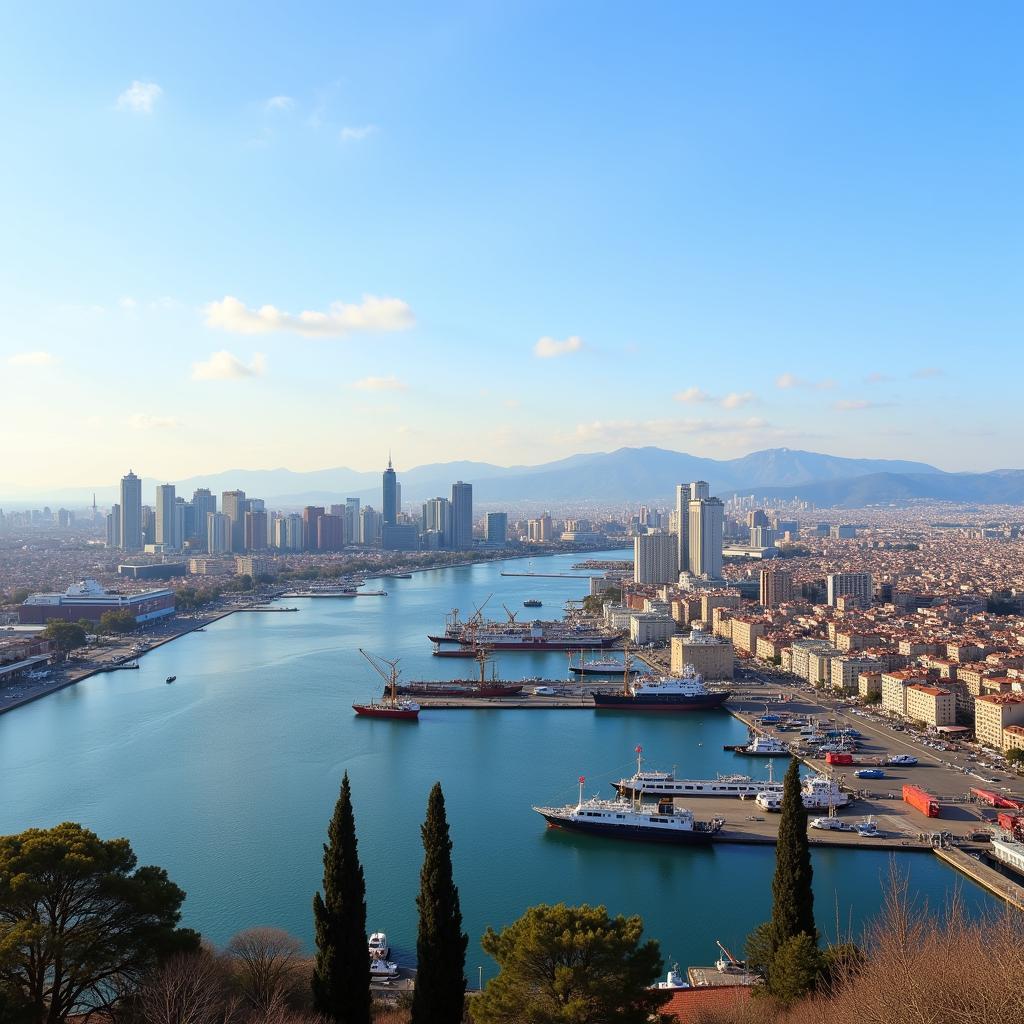Barcelona Port, a vibrant hub of maritime activity, has long been a cornerstone of the city’s economy and cultural identity. From its rich history as a Roman trading post to its modern-day status as a leading Mediterranean cruise destination, the port continues to evolve and adapt to the ever-changing global landscape. This guide delves into the various facets of Barcelona Port, offering insights into its operations, infrastructure, and the impact it has on the city and beyond.
The History and Evolution of Barcelona Port
The history of Barcelona Port stretches back over two millennia, originating as a small natural harbor used by the Romans. Its strategic location on the Mediterranean coast quickly made it a vital trading hub, connecting the Iberian Peninsula with other parts of the Roman Empire. Throughout the centuries, the port continued to grow and develop, playing a crucial role in Barcelona’s rise to prominence as a major Mediterranean power. The port experienced significant expansion during the medieval period, and by the 19th century, it had become one of the most important ports in Spain. Today, Barcelona Port is a modern, multifaceted facility, handling a wide range of cargo, including containers, vehicles, and liquid bulk.
Barcelona Port’s Infrastructure and Operations
Barcelona Port boasts a state-of-the-art infrastructure, enabling it to handle a vast volume of maritime traffic. The port is divided into several specialized terminals, each catering to specific types of cargo and vessels. These terminals include the Moll Prat container terminal, the Autoterminal Barcelona for vehicle handling, and the Energy terminal for liquid bulk cargo. This diversification allows the port to accommodate the diverse needs of its customers, ensuring efficient and seamless operations. The port also invests heavily in technology and innovation, aiming to optimize processes, enhance security, and minimize environmental impact. Similar to barcelona port authority merce conesa, Barcelona Port has a strong focus on sustainability and environmental responsibility.
The Economic Impact of Barcelona Port
Barcelona Port is a significant economic driver for the city and the surrounding region. The port directly and indirectly employs thousands of people, contributing substantially to the local economy. Its activities generate revenue through port fees, taxes, and the creation of business opportunities. The port’s presence also attracts foreign investment, further boosting economic growth.
Barcelona Port as a Cruise Destination
Beyond its commercial activities, Barcelona Port is a popular cruise destination, welcoming millions of passengers each year. The port’s strategic location and proximity to the city’s attractions make it an ideal starting point for Mediterranean cruises. Cruise tourism contributes significantly to the city’s economy, supporting numerous businesses in the hospitality, retail, and tourism sectors. This dual role as a commercial and cruise port underscores Barcelona Port’s multifaceted nature and its importance to the city’s identity. For those looking to explore the city after their cruise, barcelona public transport provides comprehensive information on navigating Barcelona’s efficient public transportation system.
What are the main activities at Barcelona Port?
The main activities at Barcelona Port encompass cargo handling, passenger transport (including ferries and cruises), and fishing.
How does Barcelona Port contribute to the city’s economy?
Barcelona Port generates revenue through port fees, taxes, and the creation of business opportunities. It also attracts foreign investment and supports the tourism sector.
 Barcelona Port and the City
Barcelona Port and the City
Just as hotel sofia barcelona hyatt offers luxurious accommodations, Barcelona Port provides a gateway to the world. Are there any Italian connections to the port? You can explore this topic further on our dedicated page barcelona port italy.
Conclusion
Barcelona Port remains a vital component of the city’s identity and prosperity. Its historical significance, modern infrastructure, and diverse operations ensure its continued relevance in the global maritime landscape. From its role as a major cargo hub to its prominence as a cruise destination, Barcelona Port continues to shape the city’s economic and cultural landscape. Similar insights into digital marketing trends can be found on smmday barcelona, showcasing the city’s vibrancy in different sectors.
FAQ
- What is the history of Barcelona Port?
- What are the main terminals at Barcelona Port?
- How does the port contribute to Barcelona’s economy?
- Is Barcelona Port a cruise destination?
- What types of cargo are handled at the port?
- How does the port manage environmental sustainability?
- What are the future development plans for the port?
Khi cần hỗ trợ hãy liên hệ Số Điện Thoại: 0372999996, Email: [email protected] Hoặc đến địa chỉ: 236 Cầu Giấy, Hà Nội. Chúng tôi có đội ngũ chăm sóc khách hàng 24/7.